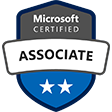Here are the CompTIA Security course offerings:
Course Overview:
This intensive hands-on class teaches students to develop customized UNIX™ commands, read & write Bourne, Korn & Bash Shell scripts & automate critical server functions. The course includes extensive lab exercises, including hands-on development & debugging of shell scripts, which will give students the ability to be more efficient and productive in less time. The focus of the course will be the Bash shell.
Attendees to TN-215: Shell Programming will receive TechNow approved course materials and expert instruction.
Dates/Locations:
No Events
Duration: 5 days
Course Objectives:
- Shell Review
- Shell Interpretation of Quotes & Backslash
- The Bash Shell
- Shell’s combined with UNIX utilities
- Programming Basics
- Data Constructs
- Programming Looping
- Your Environment
- More on Parameters
- Advanced Shell Programming
Prerequisites:
- TN-125 Introduction to UNIX & Linux or equivalent knowledge
Comments
Latest comments from students
User: hnzarate
Instructor comments: Very knowledgeable.
Facilities comments: This hotel needs better water.
Liked the class? Then let everyone know!

Course Overview:
Learn how a Modern Desktop Administrators deploys, configures, secures, manage, and monitors devices and client applications in an enterprise environment. This is a hands-on, instructor led Bootcamp focusing on the real world responsibilities of a Modern Desktop Administrator and covering the information needed for the certification exams, which are administered while attending.
If you’ve passed Exam 70-698: Configuring Windows 10 (retired March 31, 2019) you only need to take MD-101 to earn this new certification.
This certification is one of the workload administrator certification required for the Microsoft 365 Certified: Enterprise Administrator Expert certification.
Dates/Locations:
No Events
Duration: 10 Days
Course Content:
-
- Module 01. Installing Windows
- Module 02. Updating Windows
- Module 03. Post-Installation Configuration and Personalization
- Module 04. Configuring Peripherals and Drivers
- Module 05. Configuring Networks
- Module 06. Configuring Storage
- Module 07. Managing Apps in Windows 10
- Module 08. Configuring Authorization & Authentication
- Module 09. Configuring Data Access and Usage
- Module 10. Configuring Advanced Management Tools
- Module 11. Supporting the Windows 10 Environment
- Module 12. Troubleshooting the Windows OS
- Module 13. Troubleshooting Files & Applications
- Module 14. Troubleshooting Hardware and Drivers
- Module 15. Planning an Operating System Deployment Strategy
- Module 16. Implementing Windows 10
- Module 17. Managing Updates for Windows 10
- Module 18. Device Enrollment
- Module 19. Configuring Profiles
- Module 20. Application Management
- Module 21. Managing Authentication in Azure AD
- Module 22. Managing Devices and Device Policies
- Module 23. Managing Security
Prerequisites:
-
-
- Microsoft 365 Certified Fundamentals (M-MS900)
-
Target Audience:
IT professionals who perform installation, configuration, general local management and maintenance of Windows 10 core services. Candidates may also be familiar with enterprise scenarios and cloud-integrated services.
Comments
Latest comments from students
Liked the class? Then let everyone know!
Course Overview:
Dates/Locations:
No Events
Duration: 5 Days
Course Objectives:
- Plan and implement an IPv4 network
- Implement Dynamic Host Configuration Protocol (DHCP)
- Implement IPv6
- Implement Domain Name System (DNS)
- Implement and manage IP address management (IPAM)
- Plan for remote access
- Implement DirectAccess
- Implement virtual private networks (VPNs)
- Implement networking for branch offices
- Configure advanced networking features
- Implement Software Defined Networking
Prerequisites:
- A basic understanding of networking fundamentals
- Experience working with Windows Server 2008 or Windows Server 2012
- Experience working in a Windows Server infrastructure enterprise environment
- Knowledge of the Open Systems Interconnection (OSI) model
- Understanding of core networking topologies and architectures such as local area networks (LANs), wide area networks (WANs) and wireless networking
- Basic knowledge of the TCP/IP protocol stack, addressing and name resolution
- Experience with and knowledge of Hyper-V and virtualization
- Hands-on experience working with the Windows client operating systems such as Windows 8.1 or Windows 10
Liked the class? Then let everyone know!
Course Overview:
Dates/Locations:
No Events
Duration: 5 Days
Course Objectives:
- Prepare and install Nano Server, a Server Core installation, and plan a server upgrade and migration strategy
- Describe the various storage options, including partition table formats, basic and dynamic disks, file systems, virtual hard disks, and drive hardware, and explain how to manage disks and volumes
- Describe enterprise storage solutions, and select the appropriate solution for a given situation
- Implement and manage Storage Spaces and Data Deduplication
- Install and configure, and manage Windows and Hyper-V containers
- Describe the high availability and disaster recovery technologies in Windows Server 2016
- Plan, create, and manage a failover cluster
- Implement failover clustering for Hyper-V virtual machines
- Configure a Network Load Balancing (NLB) cluster, and plan for an NLB implementation
- Create and manage deployment images
- Manage, monitor, and maintain virtual machine installations
Prerequisites:
- A basic understanding of networking fundamentals
- An awareness and understanding of security best practices
- An understanding of basic AD DS concepts
- Basic knowledge of server hardware
- Experience supporting and configuring Windows client operating systems such as Windows 10
Liked the class? Then let everyone know!